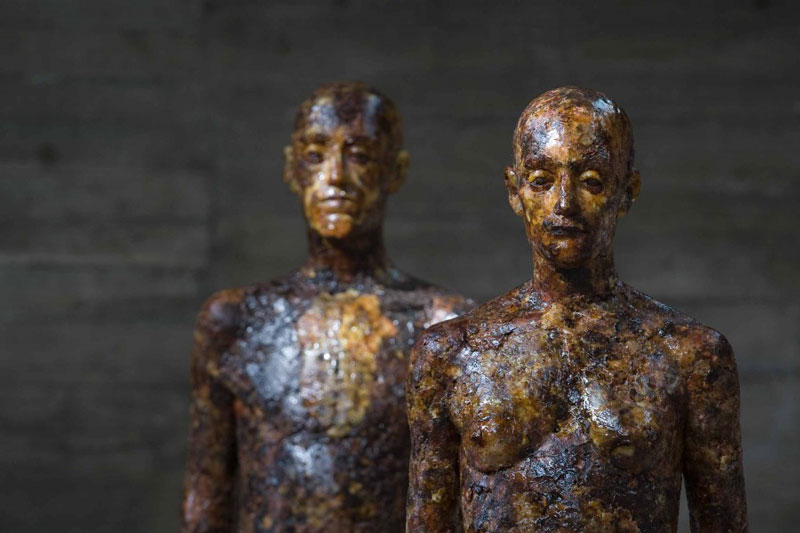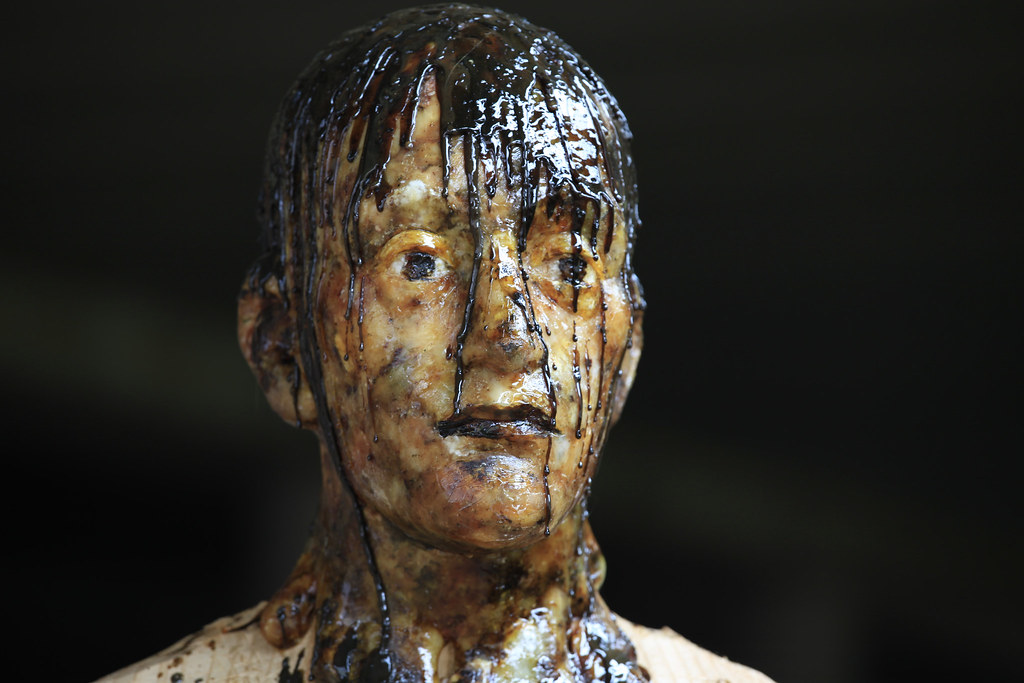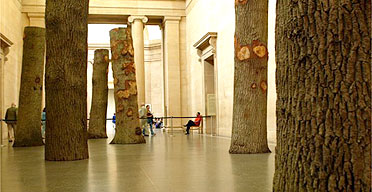Giuseppe
Penone (born April 3, 1947) is an Italian artist. Penone started working professionally in 1968 in the
Garessio forest, near where he was born. He is the younger member of the
Italian movement named "Arte
Povera", this term has been coined by Germano
Celant. Penone's work is concerned with
establishing a contact between man and nature. He still actively produces new
work.
His sculptures, installations and drawings have
always been distinguished by his radical choice of unconventional materials and
use of processes that are an integral part of his work. Each work reaches
completion through the assimilation of its actions to those of the natural
elements and grows out of reflection that adhere closely to the concrete,
visual, tactile and olfactory qualities of the materials, explored by the
artistic ways that bring out their magical and fantastic groundwork.
Examples of his Work:
Proiezione, 2000
Tree of 12 Metres
1980-2
The tree, a living organism, in appearance so
closely resembling the human figure, is a central element in Penone's work.
Many of the procedures he adopts in the creation of his works are based on the
act of relating different entities and forces, hence on traces or memories of
the contacts between them.
In Penone's work, above all its more recent
developments, the opposed concepts of identità ("identity") and identicità ("analogy")
are assimilated according to a logic that is not extraneous to the Italian
language, as in other European languages in which the two cognate words share
the same etymon. The assimilation is shown in the process by which the artist
emphasizes similar behaviors that belong to different entities by fossilizing
them in a form. As a result, images are created that are capable of making the
thoughts and imagination of those who observe them flow from one material to
another, from one subject to another, from an animal body to a vegetable or
mineral body.
| 'Spazio di Luce' (Space of Light) at the Whitechapel Gallery 2012-13 |
'The Hidden Life Within'
In December 1968 he performed a series of acts in a
wood near his home, the region of the Maritime Alps. In this work, titled Alpi Marittime, Penone intervened in the growth processes of a
tree, whose form retained the memory of his gesture over time. One of his acts
involved the flow of the waters in a stream, the vital sap which gives strength
to the tree and on which the artist draws constantly in his work, a vehicle of
growth and proliferation. He interlaced the stems of three saplings in Ho intrecciato tre alberi ("I
Have Interwoven Three Trees") and uses nails to leave the imprint of his
hand on the trunk of a tree and then affixed twenty-two pieces of lead to it,
the number of his years, joining them up with zinc and copper wire: Albero/filo di zinco/rame ("Tree/Wire
of Zinc/Copper). He enclosed the top of a tree in a net burdened by the weight
of plants: Crescendo innalzerà la
rete ("Growing It Will Raise The Net). He pressed his body to
a tree and marked on the trunk the points of contact with barbed wire: L'albero ricorderà il contatto ("The
Tree Will Remember the Contact").
Gli anni dell'albero più
uno ("The
Years of the Tree Plus One"); a bough covered with wax with, imprinted on
it, the bark of the tree on one side and on the other the gestures of the
artist; Alberi e pietre,
I rami dell'albero più uno, Zona
d'ombra ("Trees and Stones, The Boughs of the Tree Plus One,
Shadow Zone") were all created between 1969 and 1971 in the forest of
Garessio, where the artist assimilated his work to the behavior of other living
things, for the most part, trees.
Penone has made bronze trees which have been
erected in various public spaces. One example is the Pozzo di Münster ("Well of
Münster") created for the 1987 edition Skulpture Projects; on its trunk
was the imprint of a hand which gushed water. Others were the Faggio di Otterloo ("Beech
of Otterloo") conceived for the outdoor sculptures park, the Rijksmuseum
Kroller-Müller in 1988, the Albero
delle vocali ("Vowel Tree"), a sculpture thirty meters
long placed horizontally in the Tuileries in Paris, where
it has been installed since 2000, or Elevazione ("Elevation") 01 2000-2001, a large
tree raised off the ground in Rotterdam.
Penone in Arte Povera
Since 1969 Giuseppe Penone has been one of the
leading representatives of Arte Povera, the critical theory elaborated by Germano
Celant starting from 1967 and based on the work of a number of
Italian artists, principally Giovanni Anselmo, Alighiero
Boetti, Luciano Fabro, Jannis
Kounellis, Mario Merz, Giulio Paolini, Pino Pascali, Michelangelo
Pistoletto and Gilberto Zorio. These artists have numerous points in common,
above all the rejection of traditional artistic languages, the empirical and
non-speculative character of their works, and the value they place on the
anthropological dimension. The appearance of Penone in this group of artists
coincided with the emergence in the critical elaborations of the "magical
and wonder-arousing value of the natural elements". This was at a time when dialogue
and debate with the coeval international avantgardes was becoming most intense,
conducted through a series of group surveys in which Penone took part. These events
included Konzeption-Conception at
the Schloss Morsbroich in Leverkusen in 1969, conceptual art arte povera land art at the Galleria Civica
d'Arte Moderna in Turin andInformation at
the Museum of Modern Art, New York, in 1970.
Penone's work mainly consists of using the actual form of tree's as his subject matter and his sculptures. He finds creative and skilled ways to use the whole of the tree to make symbolic statements will keeping them to their true forms. He uses the message of memory to make statements about his interactions with the natural forms and uses this theme to complete his sculptures. He usually makes imprints of his body/finger prints/hands and even his breath to leave his marks that he has been part of the process of each piece. I feel his work is very important in tradition of the human conscious of making marks in something as ancient as a tree. That making messages in trees shows the relationship humans have we the earth and how we leave our marks in rural environments. How we form relationships and leave our 'imprints' on people and places and how it can form and show our growth like trees.


























